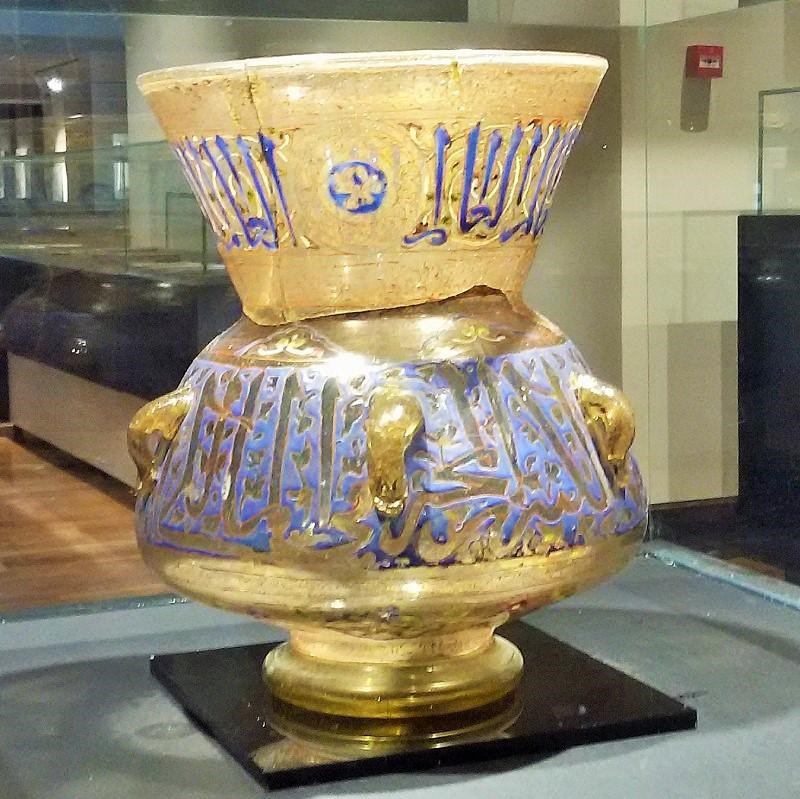
The people living in the Iranian plateau have always showcased their skill in cutting and carving glass. Archaeologists have not identified any sites that could be described as ancient centers of glass-making in Iran. Although glass making history in Iran goes back a long time, there is not sufficient information about the evolution of this branch of Iranian handicrafts.
Some glassware objects such as pale green beads and bracelets with designs of contrasting colors have been found in ancient graves of Lorestan province. Of course, the Elamites were able to create semi-transparent tubes made of glass paste in 1250 BCE. They discovered these transparent glass pipes arranged next to each other inside the window frames near the Chaghazanbil ziggurat in southwest Iran.
Some of the glassmaking techniques are seen in discovered glassware, such as Gadrooning in the Libyan historical artifacts of the 5th century BCE. At the same time and under the Achaemenid rule, there were also embossing and carving techniques used on the dishware found in Persepolis.
Before the second century BCE, the glass-making industry had long been established and flourished along the eastern Mediterranean from the coast of Phoenicia to the island of Crete. After the second half of the first millennium BCE, innovation in industry can be seen to the west towards Italy and beyond. As a result of the war between the Parthians and Romans in 92 BCE, this handicraft entered western Iran. The new techniques were mixed with the Achaemenid glasswork crafts and resulted in a significant development in the glass making history of Iran.
Sassanid Glass Making
The most interesting Sassanid glass artifacts have been discovered in northwest to southwest Iran, which were cut with grinding wheels. Sassanid glassware was more attractive and famous compared to Roman glass because of the deeper and finer cuts.
In the Sassanid Empire, important glass-making centers included southern Mesopotamia, Ctesiphon, Gilan province, West Alborz, Shush, and Rey. Embossed patterns and furnace-tampered glass works attracted a lot of attention in this period. Many of the glassware made in Europe to Japan from the 3rd to the 7th centuries AD followed Sassanid practices. Of course, Roman practices were also adopted by Iranians, but in entirely Iranian designs.
Glass Making History in the Early Islamic Era
In the early Islamic period, the history of glassmaking in Iran did not undergo any sudden changes. Sometimes, some practical works were made with impure green glass. Gradually, the two styles evolved and diversified until during the Seljuk period some common glass-making practices from the pre-Islamic era were abandoned.
Glassblowing was a glass-forming technique that was used in almost all glass-making styles. Three simple techniques were used in glass making, and from an artistic point of view, grind wheel cutting was the most important one. Later, in the early Abbasid period, engraved glassware was created using three simple but different technique styles:
- Engraving to form embossed images
- Direct cutting on embossed designs
- A combination of both styles
Glass-making decorations of this period consisted of oval-shaped designs and embossed disks, which were often applied on flasks, pitchers, drinking bowls, and especially on perfume containers. In Egypt, Damascus, and Iran, silver compounds were sometimes used to create a yellow color on glass works. During the Seljuk and Mongol invasions of Iran, glass-making did not prosper. In the history of glassmaking in that era, gilded and enameled glassworks were created in some glassmaking centers inside Syria.
Glass Making History in Safavid and Later Periods
Syrian artists and craftsmen were forced to migrate to Samarkand due to Timur’s invasion of Mamluk Syria. The general decline in the glassmaking industry in the 15th century paved the way for the arrival of European glassware into Syria and other Eastern European markets.
It seems that during that period, the Armenians of Iran first imported European glass objects to Tabriz, and then sent them to other small and large cities inside Iran. In exchange, different types of silk fabrics were exported from Iran to Europe through the same route. Then Iran became a good import destination for European and especially Venetian glass mirrors and vases, which were used as hookah jars.
Shiraz was the center of high-quality glass-making in Iran. All kinds of bottles, glasses, gooseneck rosewater dispensers, etc. were produced in the workshops of Shiraz. These objects were often transparent and colorless. Shiraz and then Qom became glass-making centers until the 20th century and continued to make glassware for trade purposes.
Unfortunately, after this period, the history of glass making in Iran has not gone through any major developments. People were also more attracted to imported and sometimes Iranian industrial products rather than the handicrafts of Iranian artists in this field of art.
Source: Destination Iran